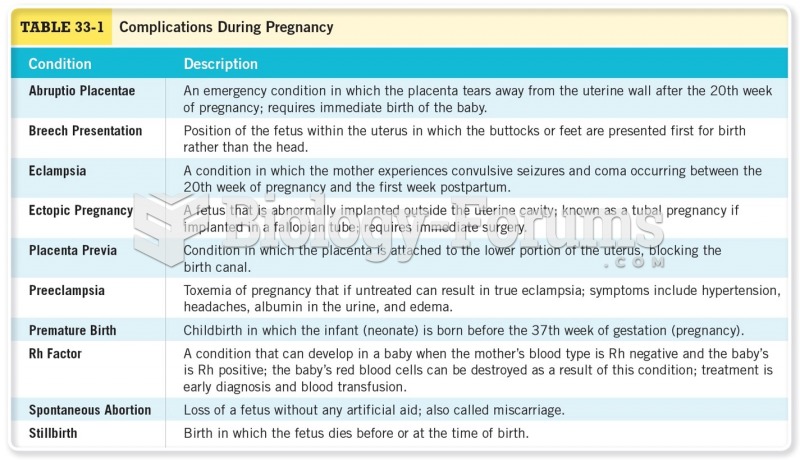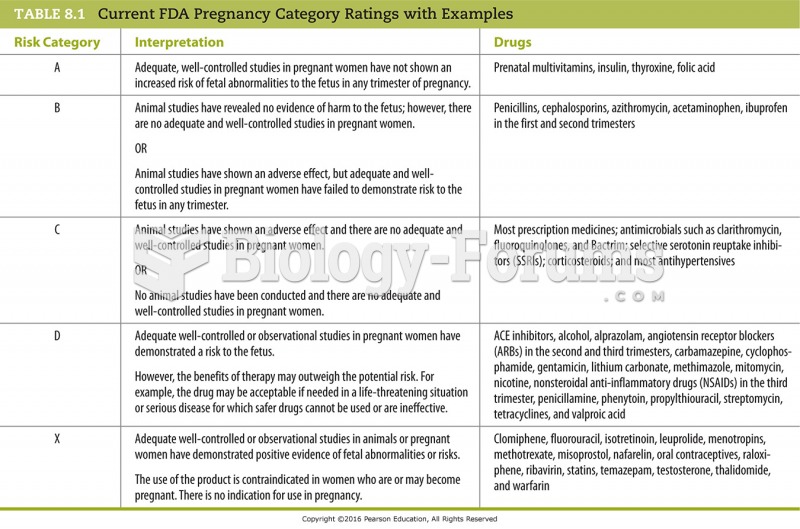Answer to Question 1
- A discussion of chromosomal factors and congenital infections can contribute to intrauterine growth retardation (IUGR)
- Maternal factors such as tobacco use, recreational drugs, and maternal illness
- Exposure to environmental toxins
b.
- All infants should be screened for hypoglycemia. Blood glucose can be easily measured by heel stick using a glucometer. Signs and symptoms of neonatal hypoglycemia include cyanosis, apnea, hypothermia, hypotonia, poor feeding, lethargy, and seizures. Newborns who are at particular risk for neonatal hypoglycemia are infants of diabetic mothers (IDMs) and premature and SGA newborns.
Answer to Question 2
- The staff representative should raise questions about issues affecting the accuracy of this immunity test upon which major decisions are to be based.
o Validity IssuesDoes the immunity test truly measure the adequacy of the person's immunity against the virus?
- How do we know this test is a good measure of a person's immunity status?
- Experience and expertise of those who developed the test?
- Sound scientific basis for the test?
- Quality control of the process of collecting samples and performing the test?
- Is there a gold standard against which test results can be compared?
- How much immunity, as measured by the test, is enough?
o Reliability Issues--Does this test provide consistent results if measured repeatedly with the same blood sample under the same conditions?
- Quality control of staff involved in collecting samples and performing the test?
- How much variability in results on the same blood sample is acceptable?
- What factors might cause different results in the same blood sample, and are there efforts to minimize these factors when the tests are conducted?
o Specificity--Of those people who test positive for having adequate immunity against this flu strain, how many truly have adequate immunity? Are there other conditions, drugs, or disease processes that might cause the test to show an adequate immune response?
o Sensitivity--Of those who truly have adequate immunity against this new flu virus, how many will have a positive test result reflecting this? Are there other conditions, drugs, or disease processes that might cause the test to show an inadequate immune response? How were the cutoff levels for this test determined? In other words, how did the experts arrive at their decision regarding the required score or value on this immunity test to demonstrate adequate immunity?
o Predictive Value--Does this test accurately predict who will get the flu and who will not? Have there been studies showing the relationship between the test results and those who develop the flu after exposure to this new strain? Do those who test positive as having adequate immunity develop flu symptoms less often than those who test negative?
b.
- In advocating for the well-being of both clients and staff, the staff representative should be concerned about all aspects of this new flu virus and its potential impact on people who develop this flu and those who care for them. Concerns include but are not limited to
o How is this new flu strain spread? Can the disease be spread by being in the same room as an infected person or is direct contact with body fluids required? What is being done to prevent the spread of the disease?
o What are the signs and symptoms of this new flu? Are there any signs or symptoms that would help distinguish it from other types of flu or other diseases?
o What are the effects of this new strain of flu on cells and tissues of the body? What impact would these pathological effects have on long-term health status and future prognosis?
o How do the short-term and long-term health risks of the flu itself compare with the health risks associated with the required vaccine? Are there factors that might make the vaccine more of a danger for some individuals than for others?







